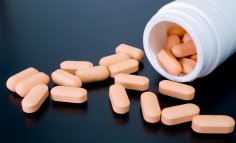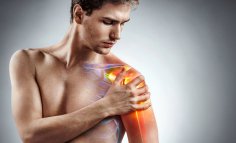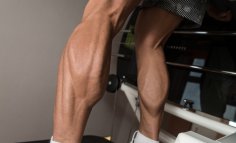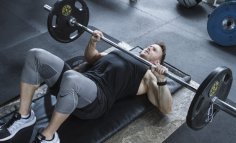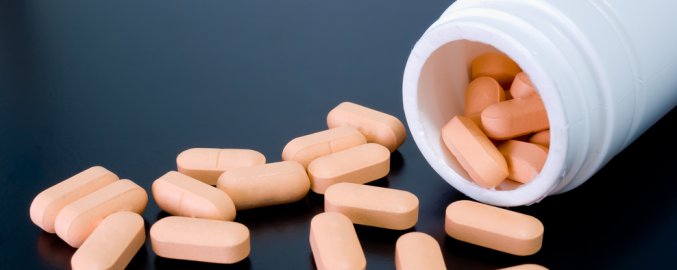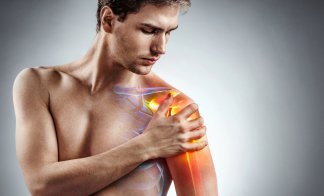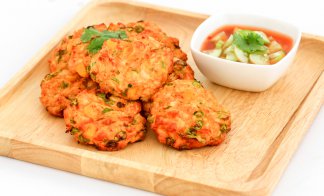Jeg kom over dette idag. Interessant, eller hva?
http://jap.physiology.org/cgi/content/full/82/1/49#SEC2ENERGY% FAT
15 --> 12 nmol/l testosteron
25 --> 17 nmol/l testosteron
30 --> 22 nmol/l testosteron
32,5 --> 24 nmol/l testosteron
ENERGY% PROTEIN
14 --> 24 nmol/l testosteron20 --> 20 nmol/l testosteron
25 --> 15 nmol/l testosteron
30 --> 11 nmol/l testosteron
MUFA (G/1000 KCAL/DAG)
5 --> 11 nmol/l testosteron
10 --> 17 nmol/l testosteron
12 --> 20 nmol/l testosteron
15 --> 24 nmol/l testosteron
SFA (G/1000 KCAL/DAG)
6 --> 13 nmol/l testosteron
10 --> 15 nmol/l testosteron
12 --> 23 nmol/l testosteron
14 --> 23 nmol/l testosteron
RATIO PUFA/SFA
.4 --> 24 nmol/l testosteron
.6 --> 18 nmol/l testosteron
1 --> 12 nmol/l testosteron
RATIO PROTEIN/CARBS
.25 --> 20 nmol/l testosteron
.35 --> 17 nmol/l testosteron
.5 --> 14 nmol/l testosteron
a)conclusion should be for the ideal testosteron promoting food intake:
CHO: 55% / PRO: 15% / FaT 30%
b) with the following values for fats
33 gram fat per 1000 kcal of which -->
13 g SFA, 15 g MUFA, 5 g PUFA
**********
Int J Sports Med. 2004 Nov;25(8):627-33.
Relationship between diet and serum anabolic hormone responses to heavy-resistance exercise in men.
Sallinen J, Pakarinen A, Ahtiainen J, Kraemer WJ, Volek JS, Hakkinen K.
Neuromuscular Research Center & Department of Biology of Physical Activity, University of Jyvaskyla, Jyvaskyla, Finland. janne.sallinen@sport.jyu.fi
Relationship between dietary intake and serum anabolic hormone concentrations of testosterone (T), free testosterone (FT), and growth hormone were examined at rest as well as after the heavy-resistance exercise (HRE) in 8 strength athletes (SA) and 10 physically active non-athletes (NA). In the first part of the study serum basal anabolic hormone concentrations and dietary intake were examined in the total group of subjects. In the second part of the study a subgroup of 5 SA and 5 NA performed the high volume and high intensity HRE. Dietary intake was registered by dietary diaries for 4 days preceding the loading day. Significant correlations were observed between serum basal T and fat (E%: r = 0.55, p <0.05, g/kg: r = 0.65, p < 0.01) and protein intake (E%: r = - 0.77, p < 0.001, g/kg: r = - 0.68, p < 0.01) in the total group of subjects. However, when the two groups were examined separately the significant relationships between serum basal T and dietary fat and protein could be noticed in SA only (fat g/kg: SA r = 0.77, p < 0.05; in NA r = 0.44, n.s., protein g/kg: SA r = - 0.84, p < 0.05; in NA r = 0.27, n.s.). Both serum T and FT responses to HRE were correlated with fat (E%: r = 0.85, p < 0.01 and r = 0.73, p < 0.05, g/kg: r = 0.72, p < 0.05 and r = 0.77, p < 0.01) and protein (E%: r = - 0.81, p < 0.01 and r = - 0.69, p <0.05, g/kg: r = - 0.86, p < 0.01 and r = - 0.65, p < 0.05). The results suggest the possible role of diet leading to alterations in serum T and FT during prolonged strength training, and that diets with insufficient fat and/or excessive protein may compromise the anabolic hormonal environment over a training program.
PMID: 15532008 [PubMed - in process]
J Appl Physiol. 1997 Jan;82(1):49-54. Related Articles, Links
Testosterone and cortisol in relationship to dietary nutrients and resistance exercise.
Volek JS, Kraemer WJ, Bush JA, Incledon T, Boetes M.
Department of Kinesiology, Pennsylvania State University, University Park 16802, USA.
Manipulation of resistance exercise variables (i.e., intensity, volume, and rest periods) affects the endocrine response to exercise; however, the influence of dietary nutrients on basal and exercise-induced concentrations of hormones is less understood. The present study examined the relationship between dietary nutrients and resting and exercise-induced blood concentrations of testosterone (T) and cortisol (C). Twelve men performed a bench press exercise protocol (5 sets to failure using a 10-repetitions maximum load) and a jump squat protocol (5 sets of 10 repetitions using 30% of each subject's 1-repetition maximum squat) with 2 min of rest between all sets. A blood sample was obtained at preexercise and 5 min postexercise for determination of serum T and C. Subjects also completed detailed dietary food records for a total of 17 days. There was a significant (P < or = 0.05) increase in postexercise T compared with preexercise values for both the bench press (7.4%) and jump squat (15.1%) protocols; however, C was not significantly different from preexercise concentrations. Significant correlations were observed between preexercise T and percent energy protein (r = -0.71), percent energy fat (r = 0.72), saturated fatty acids (g.1,000 kcal-1.day-1; r = 0.77), monounsaturated fatty acids (g.1,000 kcal-1.day-1; r = 0.79, the polyunsaturated fat-to-saturated fat ratio (r = -0.63), and the protein-to-carbohydrate ratio (r = -0.59). There were no significant correlations observed between any nutritional variables and preexercise C or the absolute increase in T and C after exercise. These data confirm that high-intensity resistance exercise results in elevated postexercise T concentrations. A more impressive finding was that dietary nutrients may be capable of modulating resting concentrations of T.Protein:karbohydrat-forholdet påvirker også testosteronnivået:
Life Sci. 1987 May 4;40(18):1761-8. Related Articles, Links
Diet-hormone interactions: protein/carbohydrate ratio alters reciprocally the plasma levels of testosterone and cortisol and their respective binding globulins in man.
Anderson KE, Rosner W, Khan MS, New MI, Pang SY, Wissel PS, Kappas A.
The aim of this study was to determine if a change in protein/carbohydrate ratio influences plasma steroid hormone concentrations. There is little information about the effects of specific dietary components on steroid hormone metabolism in humans. Testosterone concentrations in seven normal men were consistently higher after ten days on a high carbohydrate diet (468 +/- 34 ng/dl, mean +/- S.E.) than during a high protein diet (371 +/- 23 ng/dl, p less than 0.05) and were accompanied by parallel changes in sex hormone binding globulin (32.5 +/- 2.8 nmol/l vs. 23.4 +/- 1.6 nmol/l respectively, p less than 0.01). By contrast, cortisol concentrations were consistently lower during the high carbohydrate diet than during the high protein diet (7.74 +/- 0.71 micrograms/dl vs. 10.6 +/- 0.4 micrograms/dl respectively, p less than 0.05), and there were parallel changes in corticosteroid binding globulin concentrations (635 +/- 60 nmol/l vs. 754 +/- 31 nmol/l respectively, p less than 0.05). The diets were equal in total calories and fat. These consistent and reciprocal changes suggest that the ratio of protein to carbohydrate in the human diet is an important regulatory factor for steroid hormone plasma levels and for liver-derived hormone binding proteins.
